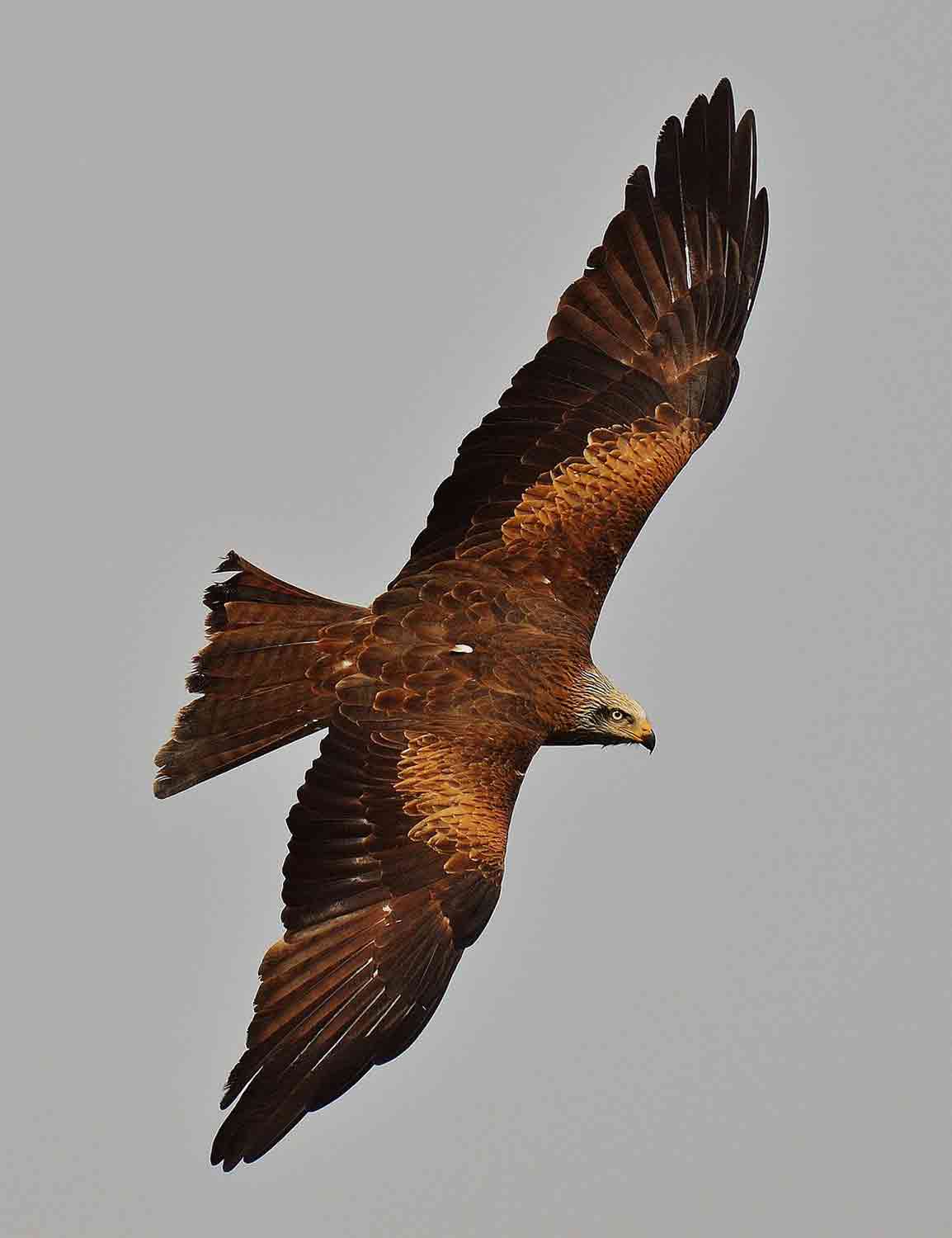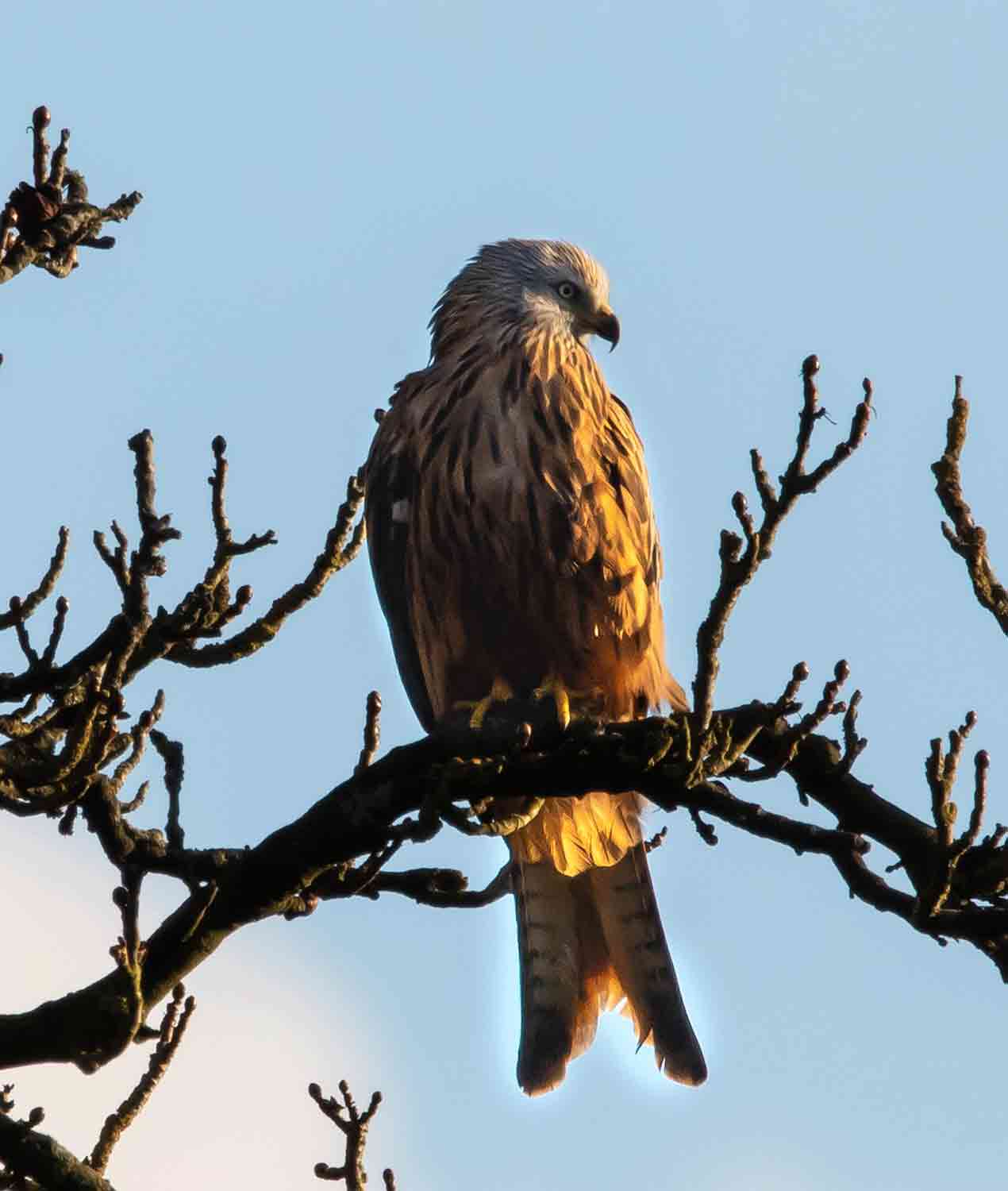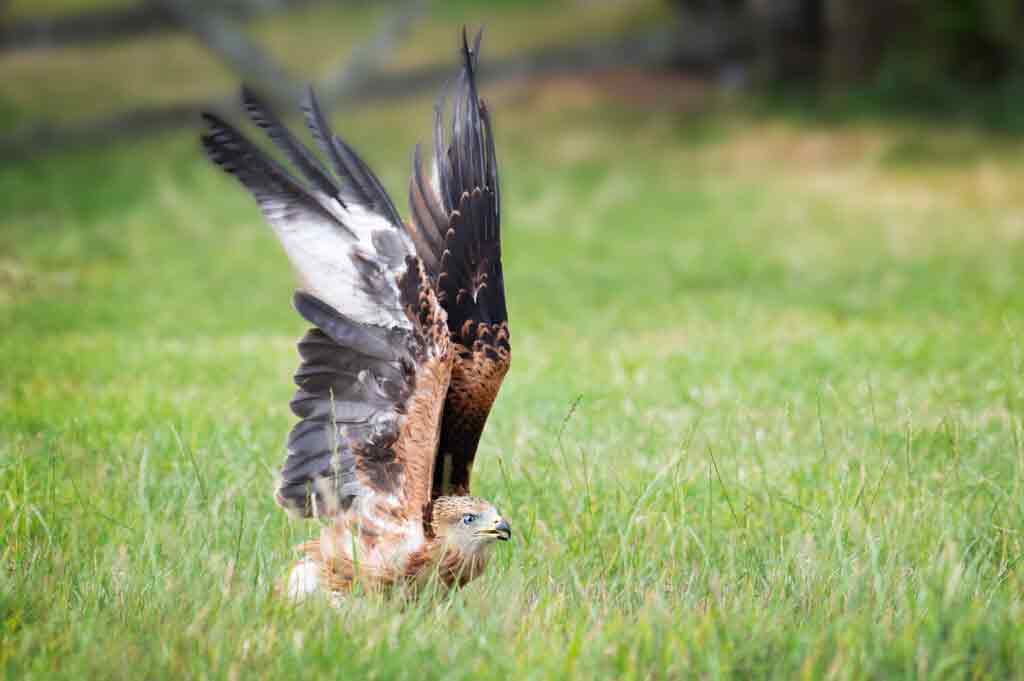Red Kite
Life History
Length: 58-64cm
Wingspan: 1.8m
Weight: 1-1.2kg
Diet: Carrion, road kill, mice, voles, rabbits, crows and pigeons, invertebrates such as beetles and earth worms.
Average Lifespan: 4 years
When to see them: All year round
UK population: est. 10,000
UK conservation status: Green

About
Once a rare site in British skies, the Red Kite has made an incredible return, thanks to successful reintroduction projects.
Red kites are diurnal birds. They are usually seen singly or in pairs but sometimes may roost in small groups or form small flocks during migration. These raptors prefer to hunt their prey in open areas, flying low above the ground. They will also hunt by sitting on a perch for many hours waiting on prey to pass by. Rather than purely hunting for food, red kites are in fact largely scavengers, so mainly like to eat scraps and small prey like rabbits.
Red Kites become less sociable during breeding season. Breeding from the age of 2 or 3 years old, they build their nests in tall trees near the edge of woodland to allow easy access. A favoured Red Kite habitat is often rural countryside, with woodlands, farmland, open spaces and country lanes. They nest in March to April and usually lay 1 to 4 eggs, which hatch at around 30 days. Both parents help rear the chicks, the female protects them from predators, while the male can travel several kilometres to find food.
Their Threats
Between the 18th and 20th century numbers plummeted to a handful of breeding pairs bringing the species to the brink of extinction in Britain. This was the result of:
Persecution: Red kites are regularly shot, due to the belief that they predate game birds such as pheasants.
Poisoning: Anti-coagulant rodenticide poisoning is used in prey species that kites feed on.
Climate change: A new study has revealed how climate change poses a hidden threat by permanently damaging the development of chicks born during droughts, and thus undermining the recovery of the species.
RTA (Road Traffic Accidents): Regularly scavenging carrion at road sides, red kites are vulnerable to road traffic accidents, especially around motorways.


How you can help
There are a number of simple ways you can help red kites:
- Plant fruit trees and shrubs early to provide a food source and avoid using pesticides to encourage invertebrate abundance
- Slow down on roads, especially if approaching road kill.
- Keep a note of a local wildlife rescue in case you find an injured or orphaned red kite.
- Report any illegal persecution to RSPB Investigations directly via their confidential ‘Raptor Crime Hotline’ 0300 999 0101
Frequently Asked Red Kite Questions
There is a grounded red kite in my garden, what should I do?
Being mindful of their talons, check the kite doesn’t take flight when approached. If the bird stays in place, call us on our emergency line for further advice.
I've witnessed illegal persecution of a red kite
You can report crimes against red kites and other raptors by emailing crime@rspb.org.uk. You can also speak to RSPB Investigations directly via their confidential ‘Raptor Crime Hotline’ 0300 999 0101 but note this should ONLY be used if you have sensitive information specifically relating to the illegal targeting of birds of prey (raptor persecution).
I think I've found an orphaned red kite
If the kite doesn’t appear to be injured, try to locate where a nest could be. If the young chick seems lethargic or is injured, carefully using a thick towel or blanket place the chick in a warm box with air holes.
Due to the number of factors that need to be considered when finding any young animal, the best port of call is to give us a call so we can triage the situation appropriately. Our emergency helpline is 01372 360404.
**be aware of their talons**